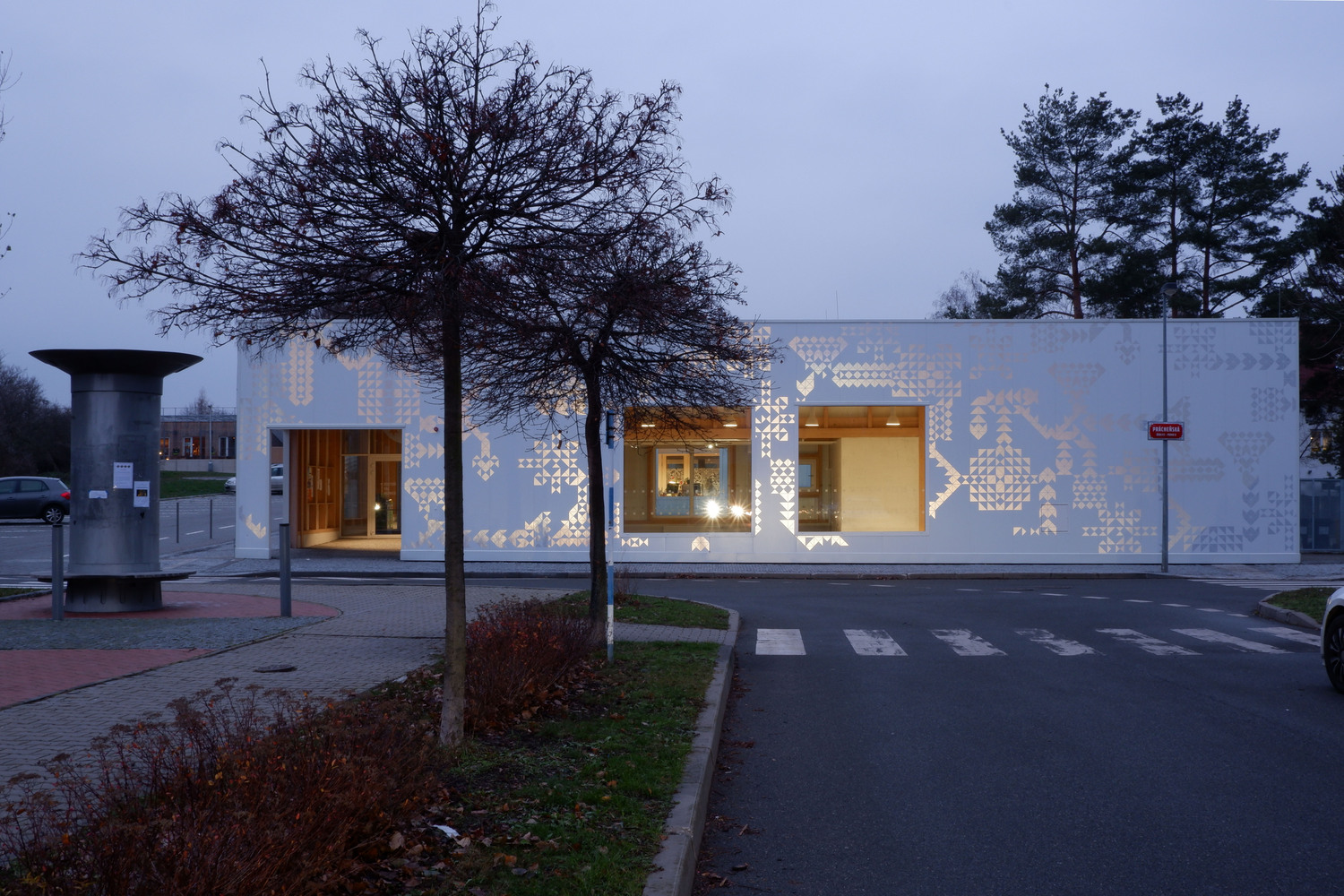Xian Westin Museum Hotel Neri - Hu Design and Research Office
2015-05-30 02:00
Text description provided by the architects. In an ancient capital of China, Neri&Hu Design Research Office’s design of the Westin in Xi’an emerges as a tribute to both the city’s importance as a hub of burgeoning growth in the region, as well as its long standing status as a cradle of Chinese civilization. With 3,100 years of history embedded in the layers of the city, Xi’an is not merely a formidable backdrop to the building itself but has provided the architects with design inspirations that inextricably link its past to its present and future.
到达西安的历史中心,人们立刻被包围着的城墙的堡垒般的扩张所震撼,而威斯汀的建筑则从这一沉重的纪念碑中汲取了线索。尊重它的城市环境,黑暗的灰泥和石板建筑采用了中国本土建筑的轮廓。虽然倾斜的轮廓和突出的屋檐是可以立即识别的,它的传统细节已被简化为简洁的当代建筑线。立面上的深切开口的节奏顺序有趣地发生了变化,在随后的五层结构的每一层上都变得越来越小,给人一种建筑质量在上升时逐渐缩小的错觉。每一个洞口都有一种生机勃勃的红色色调,都倾向于直接俯瞰邻近的地标“大雁阁”,揭示出这座建筑的厚度,就像它的历史和地面本身一样,深深地植根于它的历史之中。
Arriving in Xi’an’s historic center, one is immediately struck by the fortress-like expanse of its enveloping city walls, and the architecture of the Westin takes cues from this heavy monumentality. Respectful of its urban context, the dark stucco and stone clad building blocks adopt the profile of vernacular Chinese architecture. While the sloped contours and overhanging eaves of the roof are immediately recognizable, its traditional details have been reduced to the clean lines of a minimalist contemporary architecture. The rhythmic sequence of deep-cut openings on the façade shifts playfully, getting smaller on each subsequent level of the five storey structure, giving the illusion of the building mass tapering as it rises. Each opening, lined in a vibrant red hue, is slanted to direct views to neighboring landmark the Big Wild Goose Pavilion and reveals the thickness of this architecture, as deeply rooted in its history as in the ground itself.
建筑体积的明显沉重经常与给项目带来某种轻盈的元素并置。从远处看,很明显,倾斜屋顶,这是典型的相当低和沉重的中国传统建筑在这里,以更微妙的处理。笨重的棚子和曲线拉直,屋顶是从建筑物下面的质量通过一段玻璃和浮起一层以上。走近它,人们会发现,整个建筑组合都被反射水池包围着,给人留下的印象是一座悬挂在无限天空中的建筑物。在它的两个主要入口之一,木条檐被轻轻地连接到外观,让光线和阴影渗透到内部深处,吸引更多的游客。一旦进入,一个令人愉快的惊喜等待着,从每一卷刻有的一片风景插入每一个街区的中心,漫过滑雪庭院的光线。建筑师们不断努力地将外部延伸到内部,这也许是在东入口的一套横扫楼梯上表现得最为壮观,它把游客从下面两层带到了位于项目中心的一个巨大的下陷花园,这个花园周围是主要的公共空间。就像西安边上的新石器时代的半坡村,或者每年数百万人为之奔赴参观的兵马俑一样,这座建筑是对地下建筑的一种庆祝。
The apparent heaviness of the architectural volumes is constantly juxtaposed against elements which bring a certain lightness to the project. From afar, it becomes apparent that the pitched roof, which is typically quite low and heavy in a traditional Chinese building is here, handled with more delicacy. Bulkiness shed and curves straightened, the roof is lifted from the building mass below by a band of glazing and floats one level above. Approaching it, one discovers that the entire assemblage of buildings is surrounded by a reflective pool of water, leaving the impression of a building that is suspended in an infinite sky. At either of its two main entries, wooden slatted canopies are gently attached to the façade and allow light and shadow to permeate deep into the interior, drawing visitors in further. Once inside, a pleasant surprise awaits, the light which floods in through skylit courtyards carved from each volume, as a piece of landscape implants itself into the center of each block. The architects’ constant effort to extend the exterior into the interior manifests most grandly perhaps in the sweeping set of stairs at the East entry, which brings visitors down two levels below into a large sunken garden at the very heart of the project, around which are located the main public spaces. Like the Neolithic Banpo village on the skirts of Xi’an, or the terracotta warriors for whom millions travel each year to visit, the architecture is a celebration of the subterranean.
从东方入口到中央凹陷花园的旅程中,有一处是西安威斯汀博物馆特有的特色,这是一座藏有该地区古老壁画艺术的博物馆。奈里
Along the journey from the East entry to the central sunken garden is a feature which is unique to the Westin Xi’an, a museum housing ancient mural art from the region. Neri&Hu’s concept for this space is grounded in the basic notion that the display format for murals should be inherently different from the display of any other form of art. As historic objects of art needs strict humidity, lighting, and temperature control, the design of the exhibition space starts with those basic units of exhibition, metal cases hung on bare white walls. Departing from the quintessential “white cube" museum idea here, each unit of display casework is positioned in a way that expresses each case's individuality and the individuality of each work of art within. By detaching the casework from the white wall, and then framing the mural fragments as individual works, one is able to more deeply appreciate each one as a unique art piece.
The Westin Xi’an features three restaurants whose interiors Neri&Hu was also responsible for. The Chinese restaurant is a free-standing building which caps off the sunken garden on the West side, and its detachment from the other buildings allowed the architects to experiment more freely with its massing. Cleverly playing on the notion of the heavy roof, the entire building here is expressed as a Mansard roof which drops so low it appears to only be slightly hovering off the ground. Dormer windows protrude on each side to provide light, and the structure of the roof is exposed on the interior, so that one is constantly reminded of the inhabitation of this roof. The Private Dining Rooms are contained within a brick mass with vertical cuts through it, bringing unexpected light and views to the dining experience. The concept for the Japanese restaurant is derived from the stage of Kabuki theater, where actors surround the audience and perform in the round. In this restaurant, the main circulation paths are elevated around the perimeter, with diners inhabiting the sunken area in between; servers and passersby become performers on stage. Continuing the theme of performance and display, the All-day-dining restaurant features glass encased dining and buffet areas in the center of the space. Like a marketplace display vitrine, the food and spectacle of feasting become focal points.
With Neri&Hu Design Research Office’s fresh take on historic references, the Westin Xi’an pays due homage to this ancient city, while continuing to break through preconceived notions of Chineseness in architecture.
 举报
举报
别默默的看了,快登录帮我评论一下吧!:)
注册
登录
更多评论
相关文章
-

描边风设计中,最容易犯的8种问题分析
2018年走过了四分之一,LOGO设计趋势也清晰了LOGO设计
-

描边风设计中,最容易犯的8种问题分析
2018年走过了四分之一,LOGO设计趋势也清晰了LOGO设计
-

描边风设计中,最容易犯的8种问题分析
2018年走过了四分之一,LOGO设计趋势也清晰了LOGO设计
















































































